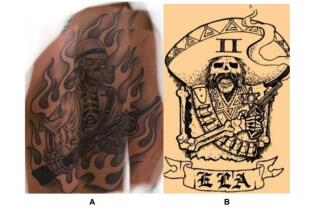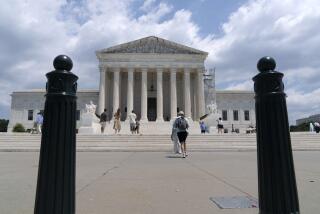Tattoos as protected speech
- Share via
Mention the 1st Amendment and an array of images come to mind: a printing press, a protest sign, a street-corner preacher, the fingers of a citizen journalist pecking out a bulletin for the blogosphere. Now there is another icon of free expression: the illustrated man (or woman).
Last week the U.S. 9th Circuit Court of Appeals ruled — correctly — that tattoos are a form of protected expression and that the city of Hermosa Beach may not impose a blanket ban on tattoo parlors. The decision arose from a challenge by a tattooist to the city’s municipal code, which allows a diverse group of commercial operations — including “adult businesses,” gun shops and fortunetelling establishments — to set up shop, but excludes tattoo parlors.
In a majority opinion that sometimes reads like a paean to the art of the tattoo, Judge Jay S. Bybee concluded that tattoos — and by extension the tattoo business — are a “purely expressive activity” covered by the 1st Amendment. Tattoos, the judge wrote, “can express a countless variety of messages and serve a wide variety of functions.” Indeed, the medium of skin can also be the message. Bybee said that by “permanently engrafting a phrase or image onto his skin, the bearer of that tattoo suggests that the phrase or image is so important to him that he has chosen to display the phrase or image every day for the remainder of his life.”
Whatever one thinks of tattoos, it’s impossible to disagree with Bybee’s conclusion that “a form of speech does not lose 1st Amendment protection based on the kind of surface it is applied to.”
That said, there is an important difference between writing on paper and writing on skin: the threat that unsterilized needles will transmit tuberculosis, hepatitis, HIV and other diseases. Hermosa Beach cited that danger in defending its ban, but the court rightly said that safety “could be achieved by regulations ensuring that tattooing is performed in a sanitary manner rather than outright prohibition of tattooing.” That’s admittedly easier said than done. The court, citing statistics provided by the city, noted that Los Angeles County has only one health inspector for nearly 300 tattoo establishments and more than 850 tattooists, and that California lacks statewide standards for sterilization and sanitation and standards for tattooists. This regulatory gap needs to be closed.
Meanwhile, although Hermosa Beach doesn’t have to allow tattoo parlors in every part of town, it must find room for them somewhere in its zoning scheme. The 9th Circuit was unambiguous: A city may not banish a business operation that engages in or fosters constitutionally protected expression, however unconventional. It’s a lesson that should be inscribed in the minds of local officials, if not on their skin.
More to Read
Sign up for Essential California
The most important California stories and recommendations in your inbox every morning.
You may occasionally receive promotional content from the Los Angeles Times.










